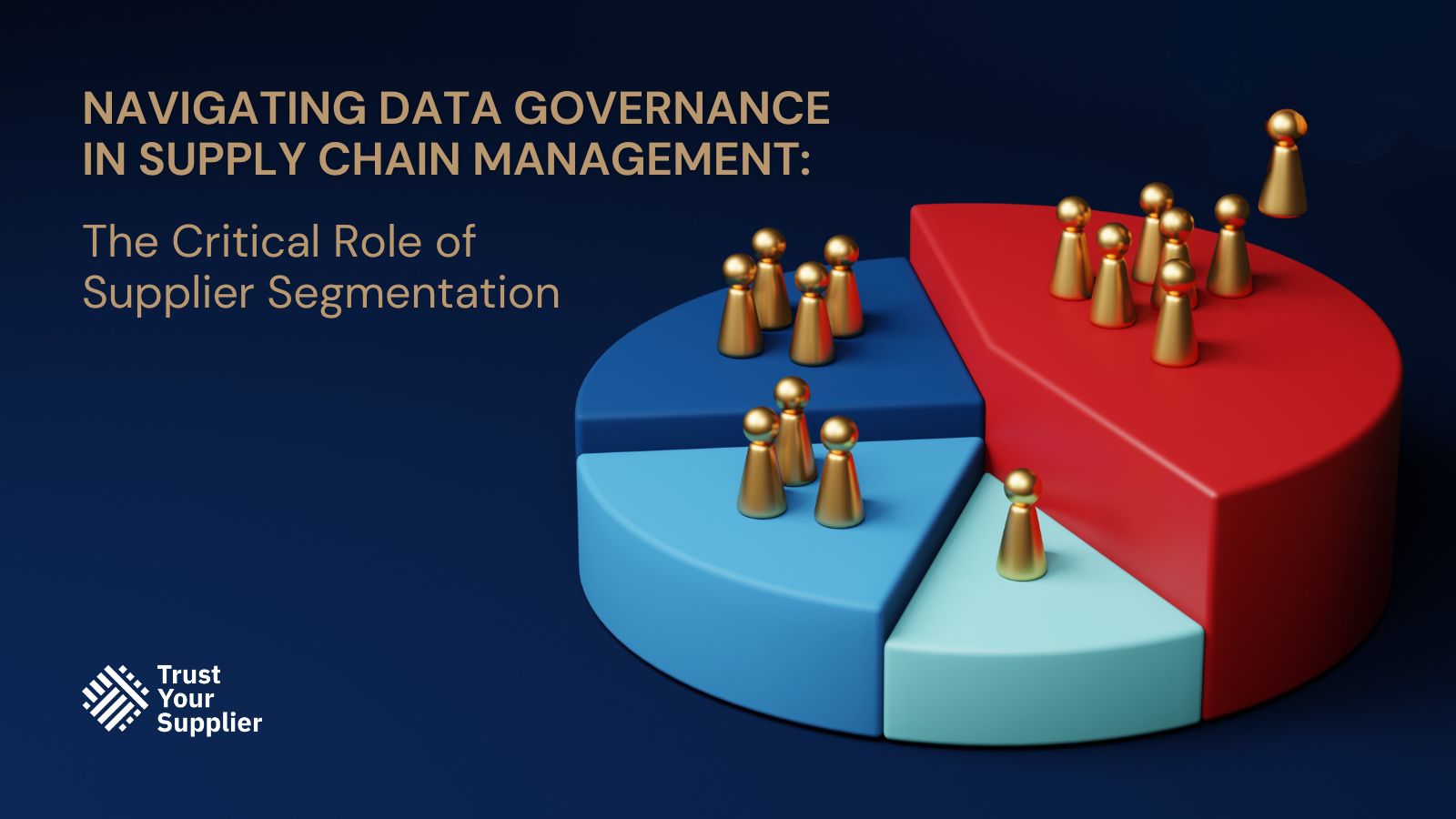by Michelle Armstrong, TYS Global VP of Value Solutions Consultant
In today’s global business environment, managing supply chain risks and ensuring compliance with both regional and global regulations is more challenging than ever. Central to this challenge is the effective governance of supplier data, which encompasses a wide range of aspects from contracts and insurance to audits and purchase orders. This blog explores the importance of utilizing supplier segmentation as a strategic tool in managing data governance and mitigating risks.
Understanding Supplier Segmentation:
Supplier segmentation is the process of categorizing suppliers based on various criteria such as spend, risk, strategic importance, and compliance. This segmentation allows organizations to apply different management techniques and resources based on the category of the supplier.
Enhancing Data Governance through Supplier Segmentation
>Revalidation of Data: Regular revalidation of supplier data is essential for maintaining its accuracy and relevance. Segmentation helps prioritize which suppliers require more frequent or detailed revalidation processes.
>Risk Assessment: Different suppliers pose different levels of risk. Segmentation allows for tailored risk assessment strategies, focusing more intensely on high-risk or high-impact suppliers.
Compliance with Global and Regional Regulations
>Understanding Regulatory Landscape: Each segment of suppliers may be subject to different regulatory requirements based on their location, size, or industry.
>Customized Compliance Strategies: Segmentation enables the development of compliance strategies that are specifically tailored to the regulatory requirements of different supplier groups.
Third-Party Risk Management
>Identifying and Monitoring Risks: Effective segmentation helps identify the various risks associated with each supplier group and setting up appropriate monitoring mechanisms.
>Proactive Risk Mitigation: By understanding the risk profile of each segment, companies can proactively develop mitigation strategies.

Contract Management and Insurance
>Tailored Contract Strategies: Different supplier segments may require different contract terms and conditions based on the level of engagement and risk involved.
>Insurance Requirements: Supplier segmentation helps in determining appropriate insurance requirements and levels of coverage for different supplier categories.
Audits and Purchase Orders
>Audit Planning: Segmentation aids in planning audits, focusing resources on high-risk or high-value suppliers.
>Streamlining Purchase Orders: By understanding the nature and requirements of each segment, companies can streamline their purchase order processes for efficiency and compliance.
Conclusion
In the complex and ever-evolving world of global supply chain management, supplier segmentation stands out as a vital tool for effective data governance. It not only ensures compliance and mitigates risks but also optimizes resources and enhances operational efficiency. As businesses continue to navigate the intricacies of global and regional regulations, the strategic use of supplier segmentation will be a key factor in their success.
Want to learn more? Let’s talk!
***
Trust Your Supplier (TYS) is a Small, Minority and Woman owned business with a global reach offering an innovative blockchain-based solution for supplier and risk management to large and mid-size enterprises. By harnessing the immutability of the blockchain, TYS ensures daily monitoring, historical, predictive, and prescriptive risk insights, enabling trusted data exchange and workflow automation beyond traditional boundaries. This distributed ledger technology fosters transparency, efficiency, and empowerment for businesses to effectively manage suppliers and mitigate risks.


0 Comments